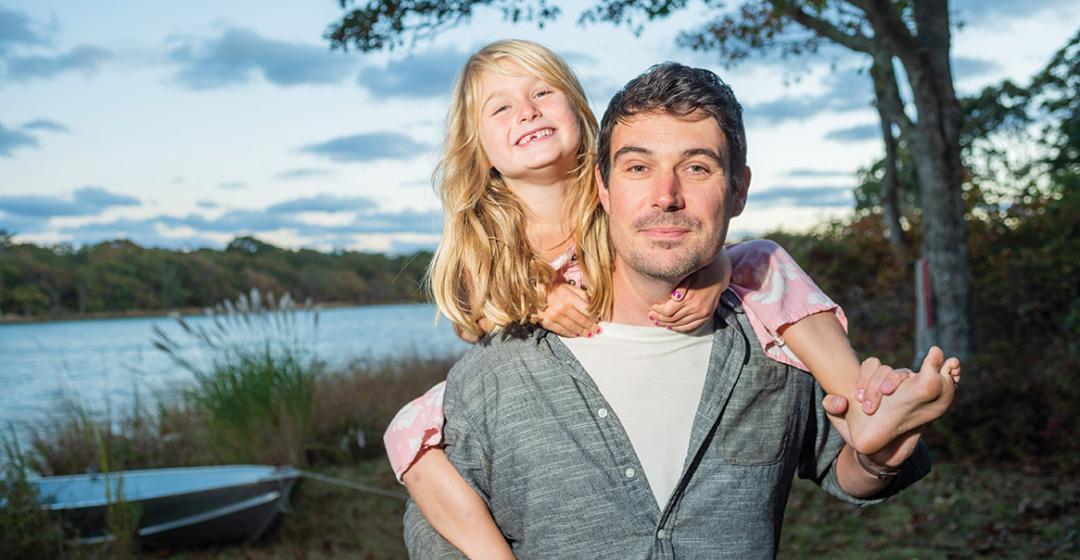After many summers of renting a Menemsha cottage, my wife and I, with the help of a thirty-year mortgage, fulfilled a dream. We bought a tiny Tisbury Great Pond summer camp. It had no insulation, no electricity, and no telephone. But the camp had the soul-stirring serenity of the pond. Tisbury Great Pond reminds me of Thoreau’s description of Walden Pond. The pond, Thoreau wrote, “is earth’s eye; looking into which the beholder measures the depth of his own nature.”
Over the decades, our camp’s outhouse gave way to indoor bathrooms, the kerosene lamps to electric lights, and the single bedroom (that also served as kitchen, dining room, and living room) to four bedrooms for a three-generation household of nine. A summer camp became a year-round home.
Similar transformations have occurred hundreds of times in recent decades along the shores of the Island’s sixteen great ponds (ponds of ten acres or more). The new thirty-four-minute movie On Our Watch, free online and the first of three films, tells the before-and-after tale of the transformations and their impact on the ponds. It points to another Island housing crisis, different than the one that generates such headlines as: “On Martha’s Vineyard, even the doctors can’t afford housing anymore.”
The movie makes me realize I am part of the problem.
The film begins in the silence of early morning with director Ollie Becker, who grew up on Tisbury Great Pond, starting the motor on a skiff. Then, with the sun rising and geese flying above, he heads out on to the water. He thinks of what it would be like if one were lucky enough to spend the entire day on the beautiful, bounteous pond, with its ducks, clams, crabs, herring, and other fish: “to feel like the whole world was held within those shores.”
Later in the film, Becker and his wife, Emily, introduce Flora, their then-three-year-old daughter, to the pond’s wonders. Flora carefully inspects an oyster and admires an arrowhead discovered on the shore. The viewer feels the promise of the great ponds for the generations to come.
That promise is perhaps best captured by David Vanderhoop, who talks of Wampanoags’ belief in preserving the land and water, “never taking too much.” Vanderhoop recalls being in a poor family during the 1950s and 1960s and hunting with other Wampanoags for ducks at Squibnocket Pond in Chilmark. After belly-crawling silently for forty-five to sixty minutes, they managed to close in on a magnificent array of ducks at the pond: “I was just in awe…so many ducks and such variety….We didn’t take any lives….We just looked, and then we just crawled back and had that [awe] within us.”
The film then moves to the great ponds of today. Such challenges as rising temperatures from climate change, cyanobacteria (blue-green algae), and excess nitrogen, primarily in wastewater from homes’ septic systems and lawn fertilizer runoff, threaten the ponds’ lives. John R. Smith, president of KleanTu Wastewater Treatment Technologies of Edgartown – a company that removes nitrogen from house and apartment-complex sewage systems – warns that there are “totally wiped out” ponds on Cape Cod with no swimming or fishing. They are for the Vineyard’s ponds, he says, “the canary in the coal mine and the canary has died.”
Emily Reddington, executive director of the Great Pond Foundation, stresses the importance of addressing the ponds’ threatened health now. If the Vineyard’s ponds are allowed to die, she says, “the cost of restoring them is exorbitant, maybe even impossible.”
Housing along the ponds is key. Mal Jones, an eighty-nine-year-old machinist and unofficial caretaker for his family’s approximately 250 acres of undeveloped Tisbury Great Pond land, contrasts the tiny camps that delighted pond dwellers in the 1960s with the houses people prefer now: “It switched gradually to showing off your house, how big a house you can build….They bring their suburbia with them.”
It’s not just the showy estates that have metastasized on the points, or the old camps, like mine, that have grown over the decades along with the families that own them. That would be challenge enough, and the waterfront is certainly where any effort to address the declining water quality in the ponds must begin. But behind the camps and castles, the vast majority of houses across the Island have septic systems and associated leaching fields rather than town sewage. Large or small, seasonal or year round, affordable or ostentatious, these houses can slowly ooze nitrogen into groundwater, which flows at a rate of roughly one to two feet per day toward one pond or another.
Judging from eight Island-wide showings, On Our Watch leaves Vineyard viewers feeling hopeful, not hopeless. Island-born Kenny Ivory, a retired hospital worker who saw On Our Watch at the Edgartown Public Library, told me he looks forward to the film’s two planned sequels. If fundraising permits, they will premiere in summers 2023 and 2024. They will focus on citizen-led efforts to change policy and behavior and emerging science about the threats to the ponds.
As for what threatens the ponds, Ivory declares: “It’s us. But we can fix it.”





